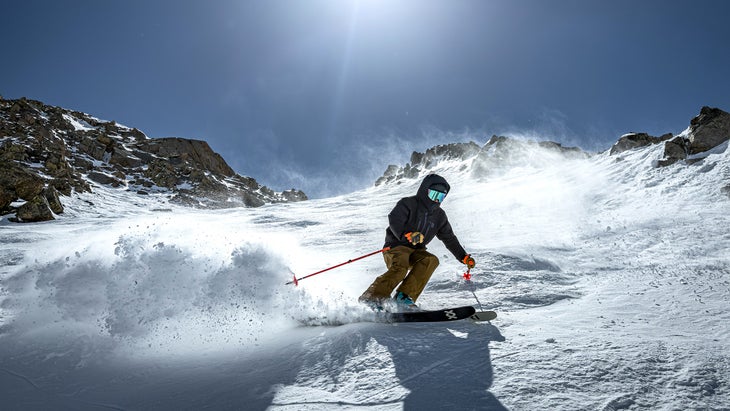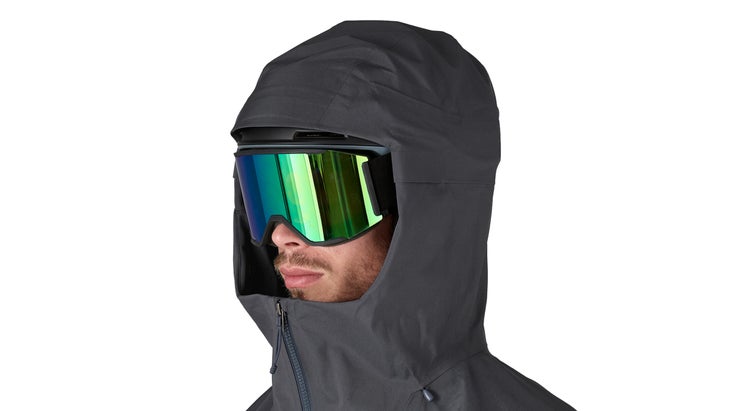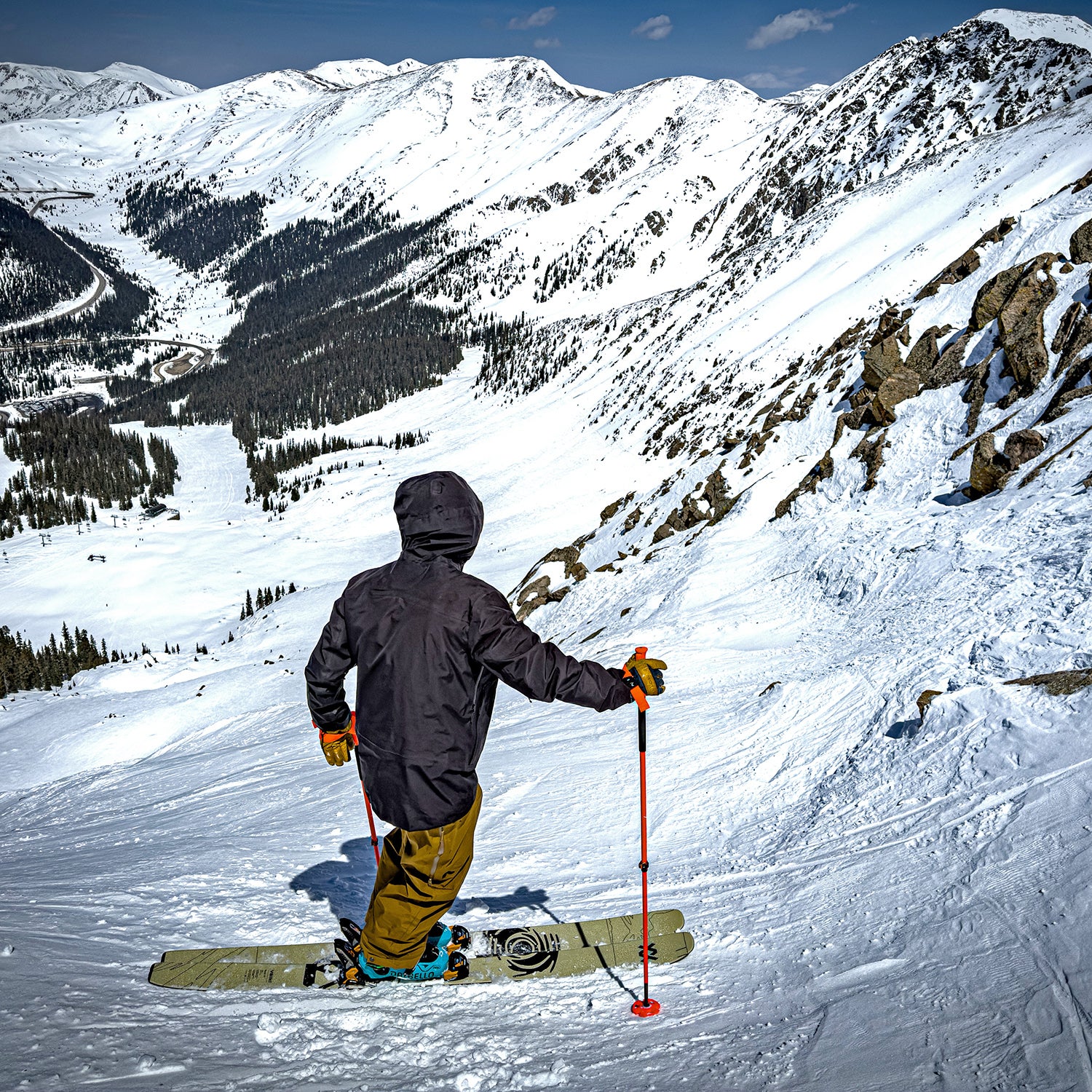Back in mid-January I was sitting around the dining table at the in Colorado after a long day of backcountry skiing with Primaloft and San Juan Mountain Guides and casually brought up the subject of jacket hoods. Never in my life have I created such an instant and intense conversation about outdoor gear. People all around the table immediately chimed in with loud and passionate opinions, advice, preferences, and stories.
Patrick Ormond, the head guide for the who’d been leading my group of skiers that day, was unequivocal about his stance:
“The more hoods, the better,” he said. “Did you see me today? At one point I had five hoods stacked together up on the ridge. When I’m belaying ice climbers, I’ve had eight hoods all stacked on top of each other.”
For Ormond, who finds himself in sub-zero temps all winter long, hoods equal essential warmth.
Former ski racer Colin Suszynski said his approach to hoods was “OCD.” If he’s wearing multiple layers that all have hoods he’ll spend the time to pull them over his head or helmet one at a time and then take them off so that they nest together and can all be pulled up at the same time if need be. He’s so particular about how the hoods fit together that he’ll often check his shadow while riding the lift to make sure nothing is askew.
The Cozy Beauty of Hoods
I’m not as particular or familiar with hoods as Suszynski or Ormond, but I too have a deep appreciation for this often overlooked gear feature. In fact, if I were to list the things that make me feel the coziest, I’d say sitting next to a wood stove, climbing under a down comforter, and pulling up my hood.
Physically, a hood adds warmth by trapping warm air that escapes from your body around your neck and head. Psychologically, a hood makes you feel protected and less susceptible to the wind, snow, and or rain.
All winter, which has been particularly cold this year, I’ve been choosing hooded sweatshirts and jackets over their non-hooded counterparts because I can’t fathom going outside with the extra protection. The few times I’ve been out in the weather, reached back for a hood and found I wasn’t wearing one, I’ve felt completely exposed and unprepared—like I was walking around in flip flops and shorts, or with my fly down.

Design Details from the Hood Geeks
This talking and thinking about hoods prompted me to learn more about the design and development that goes into the modern hood. My first call was to Dan Abrams, who co-founded 20 years ago, and is known among friends and colleagues as a true hood geek.
Abram says his love for the hood comes from years of storm chasing, which gave him the understanding that when you put up your hood, especially when you’re skiing on a cold and snowy day, it almost feels like you’re “putting on an entire other midlayer.” It adds important warmth that will help keep you on the chairlift and out of the lodge.
When Abrams and his co-founder were designing their original hoods, they realized that smaller jackets—especially those made for women—came with much smaller hoods. This made sense on paper, but the problem is that all helmets are big, so a small hood was never going to cover one, even a small-sized one, much less a medium or large one. To make the Flylow hood functional, the duo figured out the rough dimensions of a hood that would fit the largest helmet but not be so big that it swallowed smaller helmets.
“I always tell people you need something that’s about 16 inches tall and 11.5 inches deep,” Abrams says, rattling off the numbers from his memory.
Flylow also puts a lot of emphasis on how their hood adjusts and moves with the user. On their top-end jackets, you’ll always find three points of adjustment: two drawcords by the cheeks and one near the crown. These adjustments ensure a snug fit, and also allow users to cinch down the hood around a ball cap or beanie if they’re touring instead of downhill skiing.
The hood design also needs to strike a delicate balance in terms of movement. If the hood is too baggy, it stays static, so a skier will turn their head and be staring at the inside of the hood. If the hood is too tight, the skier will feel like they can’t turn their head without a fight. Abrams says that with the right tailoring, however, the hood never feels restrictive but fits snug.
Flylow pays extra attention to the height of the front collar as well. The height, when zipped, should come over the user’s lips but sit below their nose. It’s important to nail that exact spot because it provides warmth for the user’s face, but doesn’t cover their nose, which tends to push hot air into a skier’s googles and cause them to fog.
“The Foggy Goggle is a great bar in Steven’s Pass, but you want to stay away from foggy goggles when you’re skiing,” Abrams says.
Finally, Abrams knows that skiers want their hoods to look good when they’re not in use, so Flylow spends a lot of time making sure the hoods fall correctly onto the back of the jackets and don’t look bunched and tangled or skew to one side or the other.
“It has to sit just right,” Abrams says.

Engineering the One-Hand Pull
Wanting to know more, my next call was to Patagonia, which is also full of great design stories after decades of iterations and thousands of products. Both Corey Simpson, who leads their communications team, and Maggie Elder, a senior designer for technical product, had lots to say.
Simpson said that he’s watched hundreds and hundreds of hooded product samples come through, and when a hood is designed well, no one notices or talks about it. But when a hood is off, testers and designers notice immediately.
“The minute that a hood is off even just a little, people absolutely lose it,” he said, laughing.
Elder was the lead designer on Patagonia’s , one of their top-shelf ski products, and said lots of extra time was spent designing a special hood for that jacket. The hood’s unique idea came from Elder who loves backcountry skiing and knew that almost every time she crested a ridge she had to pull on her hood to fight off the wind and cold.
On most jackets you have to unzip the collar a bit in order to squeeze the hood over a ski helmet, which takes a while, lets in cold air, and requires two hands. She wanted the process to be easier, so she set out to create a hood that could be pulled up with just one hand, without unzipping the collar.
The solution was to build a little elastic into the front of the hood so that it could squeeze over a helmet but regain its tight shape once it was up. Elder didn’t want the hood to look scrunched so she designed an elastic hinge on each side of the hood that allows it to expand and contract. She then covered that hinge with a shingle of face fabric. That way, it’s hidden and the hood didn’t look like a Pacman eating your helmet.
Elder said she was happy with the design, but then Patagonia had to work extra closely with the manufacturer because it’s more complicated than you think to build a hinge into a hood and make it “passive,” a term Patagonia designers use to describe a feature that works seamlessly.
“We got there with the Untracked jacket but it took a lot of work,” Elder says. I tested an Untracked jacket and confirmed that they indeed got it right: pulling the hood up with just one hand, Elder’s hinges expanded under their fabric shingles and allowed the hood to easily and smoothly glide over my helmet with minimal effort.
Getting the design right has even higher stakes for Patagonia’s climbing line because hoods can literally be the line between life and death. A hood needs to provide warmth for climbers who are dangling off the side of a giant wall, but if the hood has too much insulation it could prevent them from hearing instructions from their partner and lead to a mistake.
Plus, climbers are even pickier than skiers.
“Sometimes we’ll get a hooded sample out to two world-class alpinists and one will think it’s the best thing ever and the other will tell us that the product should never get released to the public,” Simpson says. “That’s because one person loves the field of view on the hood but the other complains that it lets in too much snow.”
The hood is so important, Simpson says, that it’s an easy way to tell if a product is more everyday focused or is designed for a bigger and more serious adventure. The serious product always has a hood.
I don’t have any problem wearing a hoodless jacket around town, but I agree with Simpson that whenever you’re in an outdoor situation with higher stakes, a hood makes a big difference. The day after our dining room conversation on that Colorado backcountry ski trip found us all standing on a windy ridge at 12,000 feet. There was no way to stay warm without a hood, and everyone automatically pulled theirs up without a second thought. I don’t know if they noticed how easily the hoods came up and fit just right, but I sure did.


